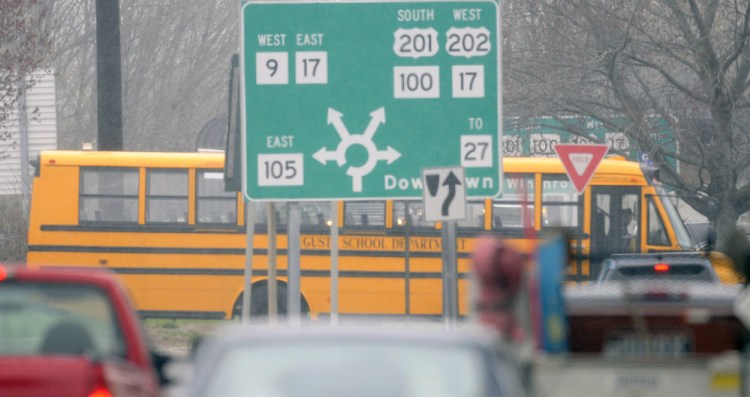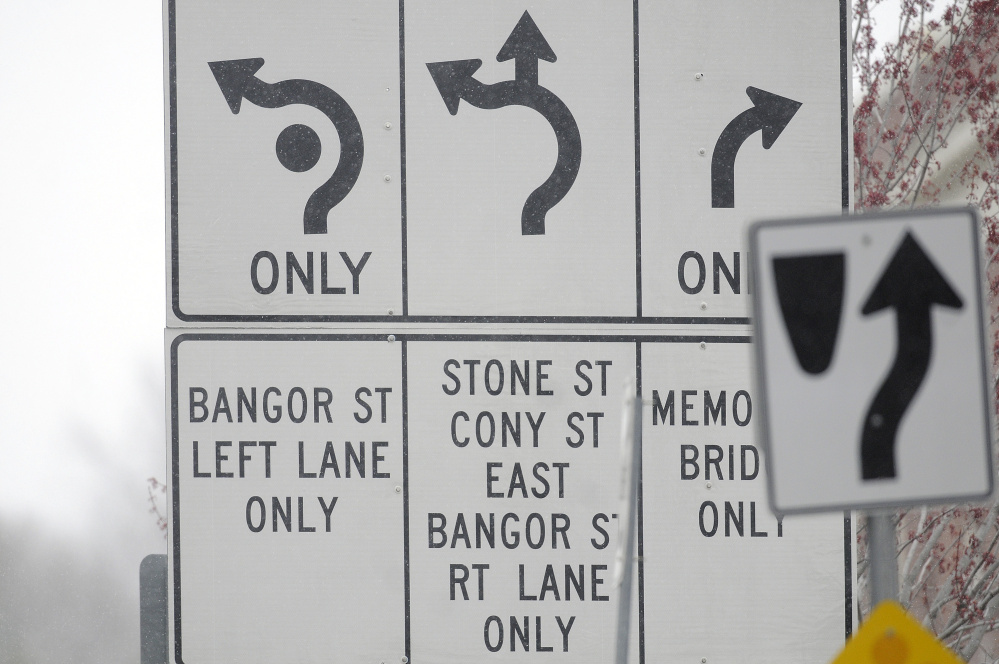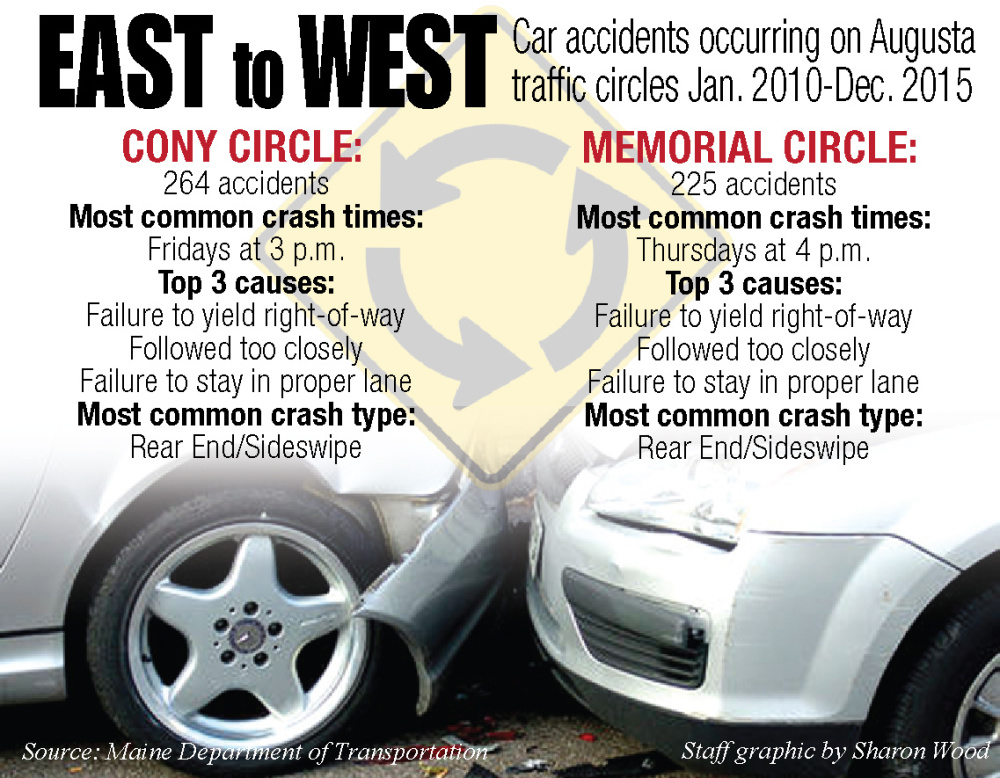AUGUSTA — For those unfamiliar with the city and its traffic patterns, driving around the rotaries on either end of Memorial Bridge can be a harrowing experience.
Maybe it’s rush hour, and by the time you realize what lane will take you to the correct exit, it’s too late to change. Perhaps there are just too many cars flying around the circle for you to feel safe merging onto it, or you’re on foot, and drivers don’t stop for you at the pedestrian crosswalks.
Or maybe, you’ve just had a look at the crash data. Both Cony Circle (on the east side of the Kennebec River) and Memorial Circle (on the west side) have had more than 200 traffic accidents in the last six years, according to the Maine Department of Transportation.
A total of 90 crashes were reported on both circles in 2015, up from 80 in 2014 and 86 in 2013, but virtually tied with the 91 in 2012. The most common factors in accidents were failure to yield at a right of way, following too closely behind other drivers and failing to stay in the proper lane.
Those rotaries, or roundabouts, would be safer if all drivers followed the rules, said Deputy Chief Jared Mills, of the Augusta Police Department. That’s why, for the second time in 2016, officers soon will be carrying out extra patrols and educational outreach on them.
“If you go around (the rotary) at 15 mph and you literally pay attention to your speed, you will find that you have time to operate safely and yield to pedestrians,” Mills said. “But everyone has to do it.”
The problem is, not everyone is doing it.
In 2015, Mills said, his department issued 346 summonses to drivers on Cony Circle and 138 to drivers on Memorial Circle. The primary violations included speeding and following too closely behind other drivers.
Officers will be issuing more tickets and warnings to drivers now, Mills said, because his department hopes to curb the dangerous driving ahead of the warmer months, when more drivers will be out. The summer also will draw more people from out of town who are less familiar with Augusta’s rotaries, he said.
“A lot of people don’t know how to navigate the rotaries,” Mills said. “A lot of people complain that the rotaries are unsafe. They certainly are safe if navigated properly.”
The department plans to conduct additional rotary enforcement patrols a couple of times a year, Mills said. It’s part of a larger effort to make the city roads safer, which also includes grant-funded patrols and outreach focused on distracted driving.
The rotary patrols will not extend to the two circular interchanges on Route 3, near the Interstate 95 on- and off-ramps, because the Maine State Police is the primary agency tasked with patrolling them. Since being built in 2013, they have been the sites of far fewer accidents than the in-town rotaries — just 16 in 2015.
While both of the city’s rotaries have been the site of accidents and violations, Mills identified Cony Circle as the more problematic of the two. Besides being the site of more traffic summonses last year, it also has been the site of 264 crashes in the last six years, versus 225 that have been reported on Memorial Circle.
In those six years, the peak high for Cony Circle was 55 accidents in 2012. For Memorial Circle, it was 42 accidents last year and in 2010. Between the two sites, most accidents have involved rear-end swipes. About five accidents have involved pedestrians. A similar number involved the reported use of drugs, medication or alcohol.
According to Mills, in the city’s two rotaries, there are drivers who speed, follow to closely behind other drivers and don’t pay adequate attention. Those behaviors can be dangerous by themselves, he said.
They also can pressure other drivers into feeling that they need to drive more quickly and recklessly, Mills said. Driving at speeds greater than 15 mph can make it harder to stop for a pedestrian waiting to use a crosswalk, Mills said, or for other drivers who need to change lanes in the rotary.
As some drivers may not know the rules of the rotary, patrolling police officers will determine on a case-by-case basis whether they should be summoned or receive a warning for traffic violations. Drivers who are stopped also will receive pamphlets explaining how to navigate rotaries safely.
Mills encourages drivers to monitor their speed actively and pay closer attention to the signs at the traffic circle entrances, as they explain which lane a driver should be in to get to which exit. For those who get into the wrong lane and worry they must cut in front of another driver, he said it’s OK to make a full loop around the rotary instead.
“It’s not just write everyone a ticket and that will solve it,” Mills said. “We’ll talk to people about this.”
Charles Eichacker — 621-5642
Twitter: @ceichacker
Send questions/comments to the editors.






Success. Please wait for the page to reload. If the page does not reload within 5 seconds, please refresh the page.
Enter your email and password to access comments.
Hi, to comment on stories you must . This profile is in addition to your subscription and website login.
Already have a commenting profile? .
Invalid username/password.
Please check your email to confirm and complete your registration.
Only subscribers are eligible to post comments. Please subscribe or login first for digital access. Here’s why.
Use the form below to reset your password. When you've submitted your account email, we will send an email with a reset code.